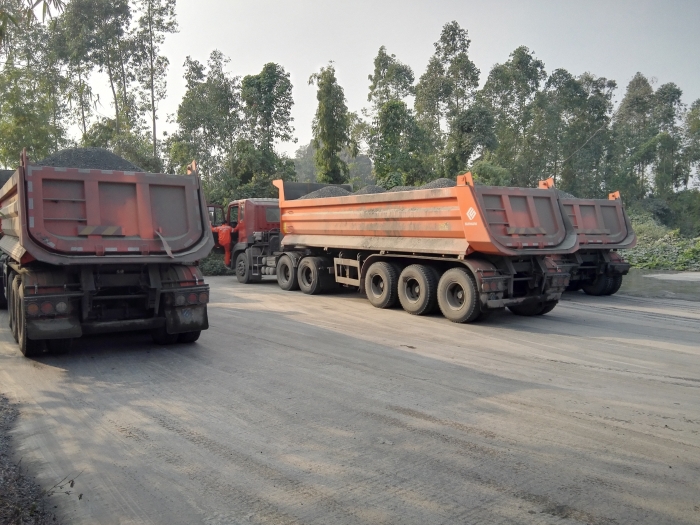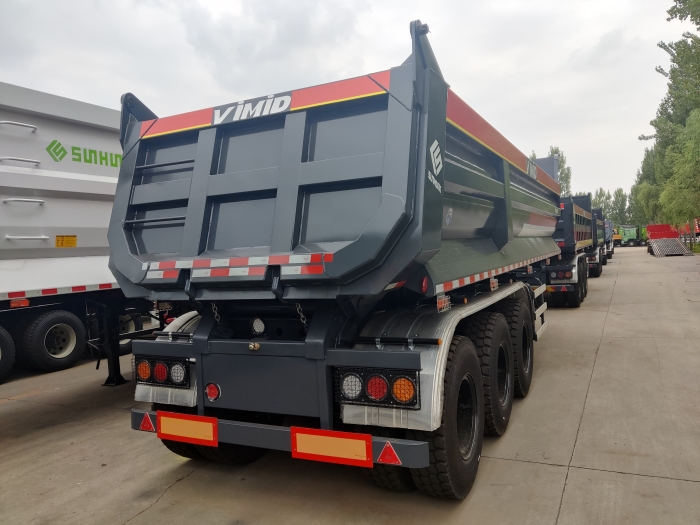- PRODUCTS
- SOLUTION
- SERVICE
- NEWS
- ABOUT US
Choosing the best material for LPG tanks involves analyzing strength, corrosion resistance, and cost. Carbon steel, stainless steel, and aluminum are top choices, each balancing durability and affordability
The material chosen for LPG tanks is a crucial decision to make due to the flammable nature of the liquid gas and the pressure it is stored in. The material directly influences the safety, cost, and lifespan of the tanks. In this regard we can assess the specifics of each material most commonly used, their properties, and the real life examples underlie their suitability.
Because LPG tanks have to accommodate the gas under pressure around 250-300 psi, they have to be made from material with high tensile strength. Carbon steel ranges in tensile strength from 485 to 585 MPa and is one of the most popular choices for large, industrial LPG plants and stores. For example, the American Society of Mechanical Engineers specifies the grades of carbon steel that have to be used for the construction of its majority.
To ensure no leakage occurs and the structure stays sound, corrosion resistance is critical. Stainless steel, with its grades 304 and 316, is a common choice for small tanks or those in harsh weather conditions. This material has a high resistance to rust and thus corrosion, contains chromium and nickel which gives it such opportunities and makes it non-oxidizable – no rust and no stainless steel tanks are often used in marine areas or close to the sea, where saline exposure is unavoidable.
The right balance of strength and cost is to be found. While carbon steel tanks are cheaper than stainless steel or aluminum ones, they are still not cheap. For instance, carbon steel costs around $0.90 per pound where stainless steel prices vary between $1.00 and $1.50 per pound based on the grade of the steel. Thus, aluminum would be the cheapest to costs around $1.20 per pound, while increasing the performance through weight reduction. However, aluminum is not the most popular choice due to the worse strength indicators compared to steel: while carbon steel and stainless steel are testament to superior strength, aluminum tanks are only used in shipping due to their shear weight. Another element interfering with the choice of a material is its availability. All three materials are widely used and are therefore fairly easy to obtain.
Extreme conditions are to be accounted for. Aluminum is reputed for retaining its strength in the wide temperature range of -80°F to 400 °F. If LPG has to be stored in these extreme temperatures, aluminum will be the most suitable material for the task.
Safety is paramount and to ensure it, the tanks’ materials have to comply with certain standards. For instance, containers with LPG have to fulfil the standards of the National Board of Boiler and Pressure Vessel Inspectors which require them to be built according to ASME code for pressure vessels. It is not just the materials that are stipulated, but also the thickness and manufacture process that can store LPG under high pressure.
When selecting materials for LPG tanks, many properties must be assessed thoroughly to ensure optimal performance and safety. Some of these properties include mechanical strength, thermal conductivity, and corrosion resistance of carbon steel, stainless steel, and aluminum, in particular, in relation to the materials’ application in LPG tanks.

Mechanical strength is significant in terms of withstanding the pressures associated with LPG storage. For example, when viewing different LPG tanks, it becomes apparent that the material in a majority of LPG tanks must withstand the pressure of at least 250 psi. Carbon steel, with a yield of strength between 250 – 350 MPa, is frequently selected as the go-to-material for preserving structure and integrity as these materials are difficult to bind under these conditions. Its high strength makes carbon steel a standard selection for LPG tanks in larger sizes, where the mechanical demands are immense.
Thermal conductivity influences the level to which the material can accommodate temperature fluctuations. The ideal benefit is in the case of aluminum with 235 W/mK. It becomes optimal for such materials to be used for instantaneous temperature changes as LPG tanks face varying environmental temperatures, guaranteeing that the material does not decompose or thermally collapse.
Corrosion resistance is the best benefit for preventing material degradation leading to leaks or tank failure. The characteristic of corrosion resistance is widely known for stainless steel, particularly 316, due to the addition of molybdenum. The following qualities allow it to be ideal in areas near the ocean or with a higher level of humidity, which ensures the exposure and cooling level is high. The example would be the repeated use of stainless steel in small LPG tanks, which require high resistance to exposure.
The primary benefit of material selection mainly influences the material cost of the tank. The initial comparison between the prices of a pound of carbon steel; $0.90; and the other materials; with the minor difference being approximately $1.50 for stainless steel and $1.20 for aluminum. In this case, the decision is affected primarily by the balance between the initial investment of the stainless and aluminum LPG tanks and their expected lifespan and cost of maintenance.
Failure to comply with industry standards is unacceptable. LPG tanks’ materials must conform to standards, such as ASME, to ensure the materials can withstand the LPG they must hold under specific operation conditions. In this case, standards such as ASME Section VIII Division 1, which states rules on minimum thickness and quality of material for the making of pressure vessels, directly affect the material selection based on their requirement to withstand these specially documented materials, significantly influencing the facility’s ability to manufacture the following equipment.
The typical first consideration in choosing the material for LPG tanks is between stainless steel, carbon steel, and aluminum, all of which offer distinct mechanical and environmental properties. Today, the paper seeks to compare these materials based on their tensile strength, price, suitability for containing LPG, and the main sectors using them.
· Mechanical Properties: Carbon steel offers robust strength and endurance, rendering it suitable for absorbing high pressures. The acceptable tensile strength for LPG tanks made of carbon steel is typically in the range from 485 to 550 MPa.
· Price: This is the cheapest material to produce tanks from and is suitable for large LPG tanks that will primarily reside stationary. The cost typically ranges from $0.50 to $0.80 per pound.
· Corrosion Considerations: Carbon steel’s main inadequacy is its susceptibility to corrosion, which will necessitate coatings or replacement. Thus, it has hidden costs that affect the lifetime cost of the tank.
· Usage: The material is common in the industrial sector for ensuring that large volumes of LPG are retained where the initial costs are low.
· Mechanical Properties: Manufactured steel, such as the 304 and 316 types, offers excellent corrosion resistance and good strength for withstanding LPG pressures. The tensile strength lies in the interval from 505 to 700 MPa.
· Cost: The material is more expensive than carbon steel, with costs ranging from approximately $1.20 to $2.50 per pound. Thus, it is not effective for very large LPG tanks, but it is suitable where the pressure is low and the corrosion resistance is high due to the price.
· Use: The chemical industry and food processing industry are typical application sectors where the purity of the processed substances ensures the connection of only stainless steel. Moreover, the material is suitable for the LPG tanks controlled near the coast where corrosion caused by saline air presents a considerable concern.
· Mechanical Properties: The material is significantly lighter than steel and offers moderate strength that is suitable for the lower pressures imposed by either mobile or small consumer LPG tanks. The allowable tensile strength ranges from 110 to 690 MPa, based on the alloy.
· Cost: This material is typically in the intermediate price range between carbon and stainless steel, with typical costs ranging from $0.95 to $1.50.
· Technical Usage: The material is frequently chosen for mobile applications that include smaller LPG tanks due to its lightweight, corrosion resistance, and performance in marine environments. Furthermore, it is also featured in the aerospace and transportation industries where the low weight is a particular functional advantage.
Based on the above properties, it was concluded that carbon steel was the best choice for industrial stationary LPG tanks such as those used in the petroleum industry. The critical reason was the material’s considerable strength and low cost, which made it possible to cover the considerable pressures and volumes at a suitable cost.

The choice of a material of LPG tanks is not only determined by the material’s physical properties but also is dependent on a variety of other critical factors. These factors include the surrounding environmental conditions, the safety regulations that must be met, as well as cost and specific applications. The impact of each of the distinguished factors on the selection is discussed.
The environment where the tank will be placed is the most critical factor in material selection. For example, for a place close to the sea, where the air has a higher salt component, the material must be highly resistant to corrosion, such as stainless steel. For very cold temperature places, the material must perform at low temperatures too. For example, aluminum is getting more ductile instead of becoming more brittle and fragile.
The safety regulations provide a foundation for the materials to be used. LPG tank materials have to be compliant with the standards of ASME – American Society of Mechanical Engineers, or DOT – Department of Transportation, in the U.S. Gas containment materials must allow safe containment of LPG under the pressure and temperature determined by the ASME or DOT: “These vessels are fabricated from carbon steel SA516-Grade 70, ASME, or DHS-certified” .
The cost of the materials has a great impact on how feasible the LPG tanks are. The best compromise in terms of cost would be carbon steel, which costs 0.50-0.80$/lb . In contrast, stainless steel costs 3$ and up per pound , making it less suitable for large-scale use or for specific purposes, especially in contrast to carbon steel. Aluminum costs around 1.50-3.00$ per pound and is therefore also more expensive in large-scale use while not providing that significant of an advantage for small tanks’ production in “smaller economies”.
The specific application in place also determines compliances and other factors. Non-mobile tanks may be produced out of carbon steel for its cost-effectiveness. Mobile tanks, on the other hand, may require a less heavy material, such as aluminum. Tanks of larger volume also require thicker and stronger materials in order to contain the LPG amount safely.
Another important factor is the long-term durability of the tank. For example, for more difficult-to-maintain or expensive maintenance environments, stainless steel tanks are preferable if the initial investment cost does not present a problem.